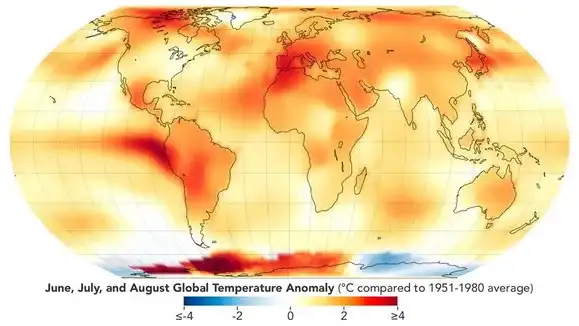NOAA Crucial Climate Findings, El Niño Update: What to Expect
NOAA experts to reveal critical climate findings for January 2024, latest El Niño update, and introduce AI-powered global temperature dataset.
NOAA experts are set to reveal crucial climate findings for January 2024, discuss the latest El Niño update, and introduce an AI-powered global temperature dataset. Amidst escalating global temperatures, this event scheduled for February 15, 2024, will shed light on U.S. and global climate analyses and present the U.S. seasonal outlooks for the upcoming three months. The revamped global temperature dataset now harnesses the power of Artificial Intelligence for enhanced global climate monitoring.
El Niño, a cyclical climate phenomenon characterized by abnormally warm ocean temperatures in the Equatorial Pacific, has long been a subject of fascination for meteorologists and climate scientists. The world has witnessed three Super Strong El Niño events since 1950, each leaving an indelible mark on global weather patterns. The Oceanic Niño Index (ONI) has been established as the principal measure for monitoring El Niño-Southern Oscillation (ENSO) conditions. According to the National Oceanic and Atmospheric Administration (NOAA), El Niño events occur when the ONI value exceeds +0.5°C for a minimum of five consecutive overlapping three-month periods. Conversely, La Niña events are characterized by ONI values falling below -0.5°C for the same duration.
As we stand on the precipice of the 2023-24 El Niño event, international weather and climate agencies are closely monitoring ENSO conditions for indications of its potential impact. The latest Southern Oscillation Index (SOI) values and ENSO outlook for the southern hemisphere autumn 2024 will play a pivotal role in determining the event's severity and repercussions. The delicate balance between El Niño and La Niña holds immense significance for the Indian Summer Monsoon (ISM), a vital lifeline for millions across the Indian subcontinent.
In a groundbreaking development, NOAA's National Centers for Environmental Information (NCEI) has incorporated Artificial Intelligence into its updated global temperature dataset. This innovative approach promises to revolutionize global climate monitoring, enabling scientists to better understand the complex interplay between El Niño, La Niña, and the Earth's ever-evolving climate system.
In January 2024, global temperatures surpassed the internationally agreed-upon warming threshold for an entire 12-month period, serving as a stark reminder of the urgent need for action. As NOAA experts prepare to discuss these pressing issues, the world watches with bated breath, eager for insights that will help navigate the challenges of an increasingly unpredictable climate.
As the global climate teeters on the brink of unprecedented change, the stories of human endurance, resilience, and innovation in the face of adversity take center stage. In the coming months, the delicate dance between El Niño, La Niña, and the Indian Summer Monsoon will once again play out, shaping the lives of millions and influencing the planet's future. With the power of Artificial Intelligence now at our disposal, we stand at the precipice of a new era in climate monitoring and understanding. As NOAA experts unravel the intricate tapestry of global climate patterns, the world will undoubtedly be watching, eager to learn, adapt, and ultimately, persevere.












Comments on NOAA Crucial Climate Findings, El Niño Update: What to Expect